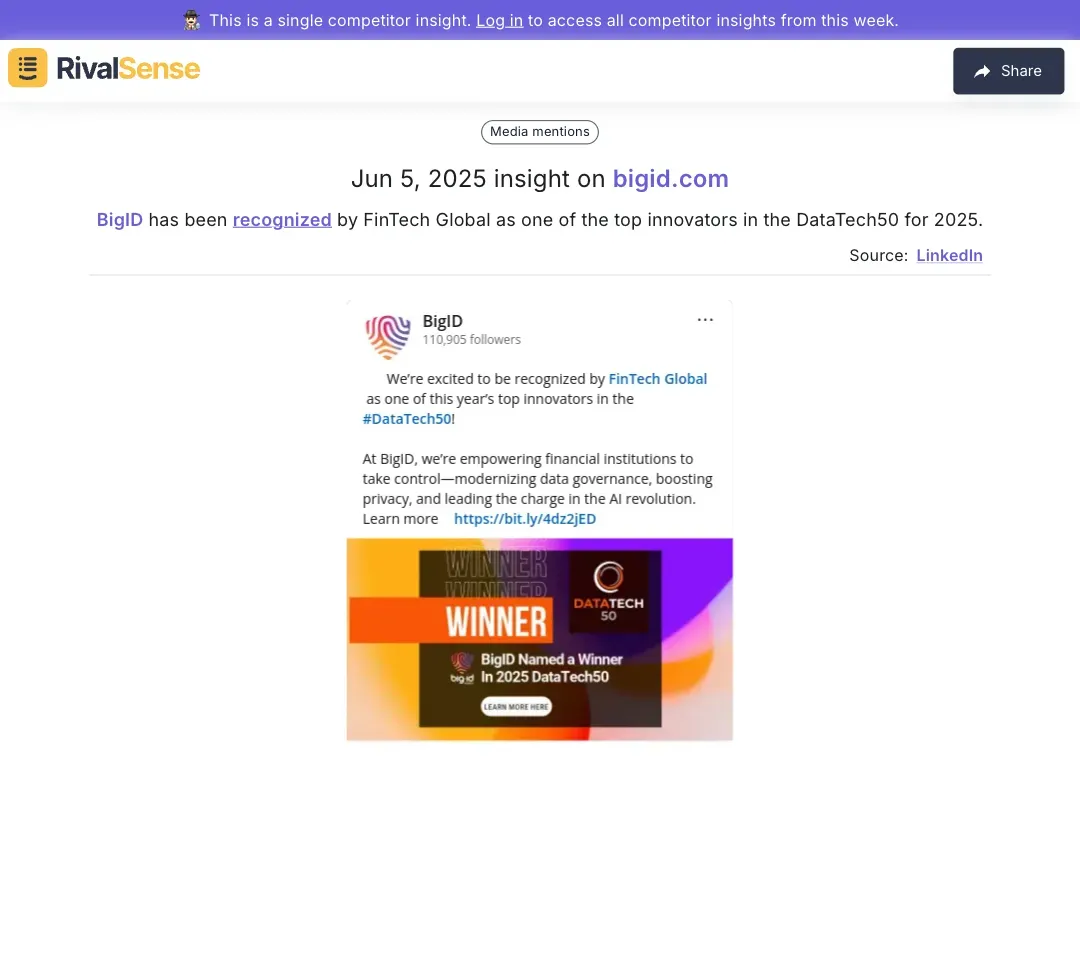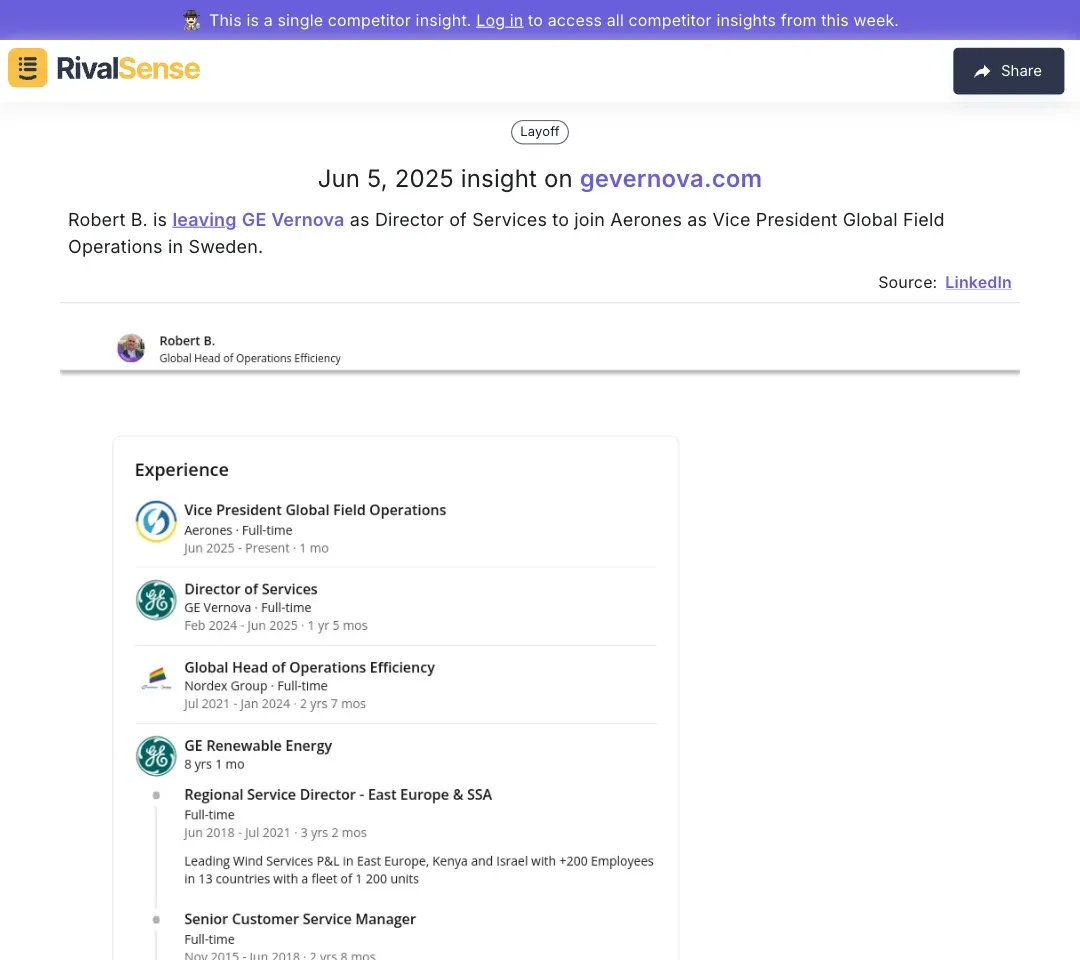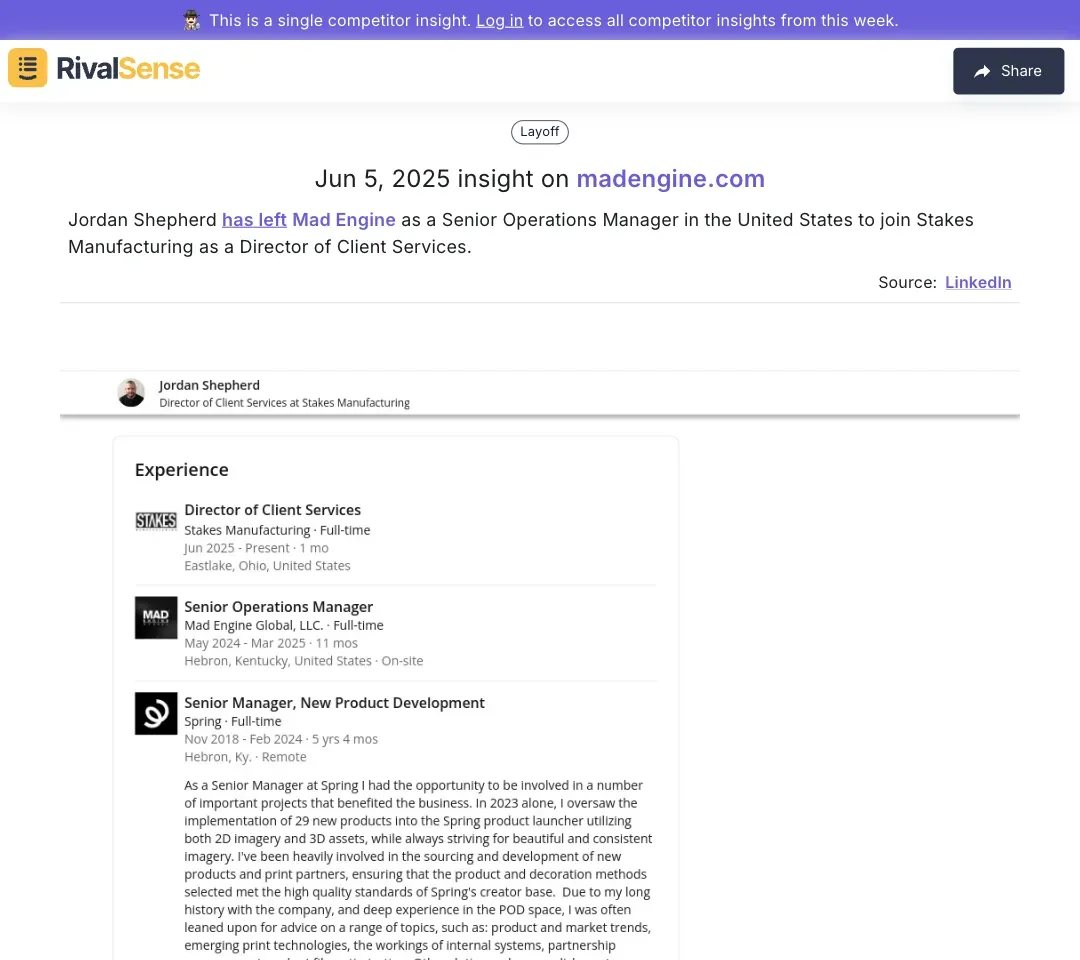Harness LinkedIn for Market Intelligence: A Strategic Guide for B2B Leaders
LinkedIn stands as an unparalleled resource for market intelligence, offering a wealth of real-time data on competitors, industry trends, and emerging shifts. With over 700 million professionals actively engaging, this platform enables you to monitor competitor activities—from product launches to hiring patterns—giving you a decisive competitive edge. By strategically analyzing posts, job listings, and company updates, B2B leaders can uncover industry movements before they become mainstream knowledge.
To harness LinkedIn's potential:
✅ Follow key competitors and industry leaders to track content, engagement metrics, and strategic focus areas
✅ Utilize advanced search to identify emerging trends like skill demands or partnership announcements
✅ Join niche industry groups to gather unfiltered insights from peer discussions
Practical steps to maximize LinkedIn intelligence:
- Monitor Competitor Activity: Track product updates, leadership changes, and partnership announcements
- Analyze Job Postings: Reveal expansion plans or skill gaps through hiring patterns
- Engage Strategically: Comment on thought leadership posts to build relationships and gain deeper context
🏆 Tracking Industry Recognition and Awards
Industry accolades like DataTech50 serve as powerful indicators of a competitor's innovation trajectory and market positioning. These awards highlight companies pushing technological boundaries, revealing their strategic priorities and future roadmap. For B2B leaders, tracking recognition provides early signals of market shifts and helps benchmark your own innovation efforts against industry leaders.
Consider how RivalSense recently identified that BigID was recognized by FinTech Global as a top innovator in DataTech50 for 2025:

Why this matters: Award tracking reveals competitors' credibility boosts that can attract investors, talent, and customers—directly impacting market share. Use these insights to refine your R&D focus and competitive positioning.
Actionable benchmarking framework:
| Step | Action | Strategic Outcome |
|---|---|---|
| 1 | Identify key industry awards | Baseline for competitive analysis |
| 2 | Track winners and innovations | Spot emerging technology trends |
| 3 | Conduct gap analysis | Identify your improvement areas |
| 4 | Leverage insights | Refine innovation roadmap |
Pro tip: Subscribe to industry newsletters and set Google Alerts for major award announcements.
👔 Analyzing Executive Movements
Executive transitions provide invaluable clues about organizational strategy and market direction. A key departure may signal restructuring or strategic pivots, while new leadership hires often precede market expansions or fresh initiatives. Geographic relocations of top talent frequently indicate regional growth plans before official announcements surface.
RivalSense recently captured this strategic shift: Robert B. left GE Vernova as Director of Services to join Aerones as VP Global Field Operations in Sweden:

Why this matters: Leadership changes directly impact competitive dynamics—new executives often drive strategic overhauls or market entries. Monitoring these moves helps anticipate competitive threats and partnership opportunities.
Practical analysis steps:
- Profile monitoring: Track key executives in competitor organizations
- Pattern recognition: Identify clusters of departures/hires in specific functions
- News correlation: Cross-reference with press releases for context
- Impact assessment: Determine how changes affect your strategic planning
🔄 Decoding Career Transitions
Lateral career moves across companies reveal industry-wide priority shifts and emerging skill demands. When professionals transition between roles—like moving from operations to client services—it signals evolving market values that could impact your talent strategy and service offerings. Cross-industry moves further highlight skill transferability trends and competitive hiring approaches.
For example, RivalSense detected: Jordan Shepherd left Mad Engine as Senior Operations Manager to join Stakes Manufacturing as Director of Client Services:

Why this matters: These transitions expose talent acquisition trends before they appear in job market reports, allowing you to proactively address skill gaps and align hiring with emerging industry needs.
Actionable transition analysis:
- ✅ Track lateral moves to identify rising role importance
- ✅ Analyze cross-industry jumps to spot valuable skill migrations
- ✅ Benchmark competitor promotions against your talent development
Practical implementation:
- Create skills matrices based on frequent transitions
- Engage with transitioning professionals for market insights
- Adjust recruitment messaging to match emerging role demands
🚀 Leveraging LinkedIn Data for Proactive Strategies
Transform LinkedIn observations into actionable intelligence by combining platform analytics with broader market data. Integration with CRM systems and social listening tools creates comprehensive competitive dashboards, turning raw data into strategic foresight. For instance, correlating LinkedIn engagement spikes with website traffic can reveal untapped audience segments.
Proven implementation techniques:
1. **Tool synergy**: Pair LinkedIn Sales Navigator with competitor tracking tools
2. **Data integration**: Overlay engagement metrics with web analytics
3. **Trend validation**: Cross-check observed patterns with customer feedback
Real impact example: A B2B SaaS company analyzed competitor hiring patterns on LinkedIn, anticipating a market expansion 3 months before official launch, allowing them to adjust pricing strategy proactively.
✅ Conclusion: Turning Insights into Advantage
LinkedIn's real-time intelligence enables unprecedented competitive foresight when systematically analyzed. For B2B leaders, the difference between reaction and proactive strategy lies in consistently translating observations about awards, executive moves, and career transitions into actionable plans. Those who institutionalize this intelligence gain months of strategic lead time.
Immediate next steps:
- Audit your current competitor monitoring system
- Implement weekly leadership transition tracking
- Establish award recognition alerts in your niche
💡 Accelerate your intelligence: See how RivalSense automates detection of competitor moves—from executive changes to award wins—delivered in weekly reports. Get your first competitor analysis today
📚 Read more
👉 Workflow Breakdown: Market Research for Auto Glass Leaders
👉 How Competitor Hiring & Layoffs Reveal Financial Strategies
👉 Decoding Meta's Bangkok Training: Actionable Insights for Competitors
👉 How to Respond When Competitors Restructure: Multitude Case Study
👉 Turning Competitor Pricing Shifts into Your Advantage: The 1Password Case
